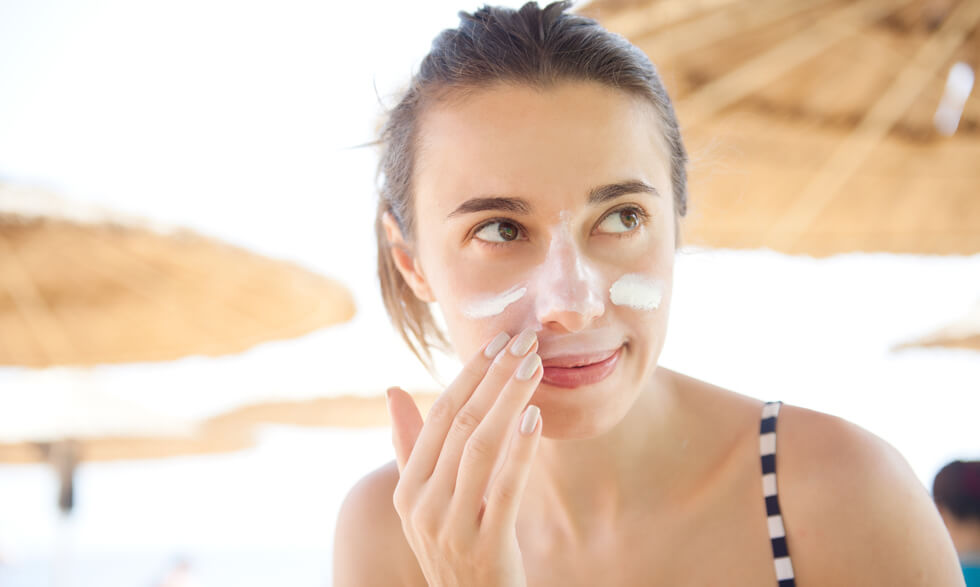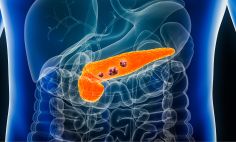Health Topics

Tips for staying healthy and safe this summer
MedlinePlus and NIH offer lots of information online to help. We've summarized some helpful highlights to get you started.
Sun Exposure and Your Skin
Too much time in the sun is linked to everything from sunburns to heat illness, long-term skin damage, and skin cancer.
You can’t see the sun’s UV (or ultraviolet) rays but they contain a form of radiation that passes through your skin and can damage your skin cells.
If possible, stay out of the sun from 10 a.m. to 2 p.m. when the sun’s rays are strongest. If you do need to go out in the sun, take steps to be safe. Use and reapply a sunscreen with an SPF of 15 or higher and wear UV-protective sunglasses and clothing.
Also, keep an eye out for skin moles or spots that change color, which could be a sign of cancer. Contact your health care provider immediately if you think you may have a cancerous mole.
Source: MedlinePlus: Sun Exposure
Poison Ivy, Oak, & Sumac
Ouch! Poison ivy, oak, and sumac are types of plants with sap or oil that many of us are sensitive to. When our skin touches the sap, it can create itchy rashes and blisters. The rash often doesn’t often start until 12 to 72 hours after contact.
To avoid rashes, try to recognize and stay away from poison ivy, oak, and sumac. Be cautious when you hike or spend time in heavily wooded areas.
If you come in contact with one of these plants, wash your skin with soap right away. If you do get a rash, your pharmacist may recommend over-the-counter medicines to help with itching. Luckily, rashes are not contagious.
If your rash is severe or you notice swelling, contact a health care provider immediately, as that can be a sign of a serious reaction.
Sources: MedlinePlus: Poison Ivy, Oak, and Red Sumac; American Academy of Dermatology: Poison Ivy, Oak, and Sumac
Dehydration
Our bodies are 90 percent water, so it’s no surprise we need a lot of it to keep going each day. In fact, the average person needs three quarts of water daily to function well.
But when we’re exercising, sweating, or spending time in the sun, we may need more liquid.
Without enough hydration and electrolytes, we can become dehydrated. Signs of dehydration are feeling thirsty, having dark-colored urine, feeling faint or dizzy, and having to urinate less.
If you think you may be dehydrated, try to drink small amounts water over a period of time to prevent throwing up.
Electrolytes—minerals in our bodies that help balance the amount of water—are key to avoiding dehydration. Sports drinks (without caffeine) with electrolytes may help if you have an imbalance.
Sources: MedlinePlus: Dehydration; MedlinePlus: Electrolytes
Insect Bites and Stings
At one point or another, you’ve probably experienced a not-so-fun bug bite or sting.
Mosquito and flea bites usually itch. Bee, wasp, and hornet stings and fire ant bites usually hurt.
In general, bug bites and stings are uncomfortable but not life-threatening. However, if you know you are allergic to any insects, like bees or wasps, keep an emergency epinephrine kit handy.
Ticks are usually harmless, but a bite from an infected blacklegged deer tick can lead to Lyme disease. Lyme disease is a bacterial infection that can cause serious health problems if left untreated. Some early symptoms include fever and chills, headache, joint and muscle pain, and a bull’s eye rash where the tick bit you. After spending time outdoors where there may be ticks, make sure to check yourself, family members, and your pets. If you think you may have Lyme disease, seek medical help immediately.
For mild itching or discomfort from other bug bites or stings, over-the-counter antihistamines, anti-itch creams, and ibuprofen and acetaminophen may help.
To avoid bug bites and stings, use insect repellent according to label instructions, be careful when performing activities outside, wear protective clothing (like long pants or sleeves), and avoid heavily scented soaps and perfumes.
Sources: MedlinePlus: Insect Bites and Stings; Food and Drug Administration: Beware of Bug Bites and Stings; National Institute of Allergy and Infectious Diseases: Lyme Disease







